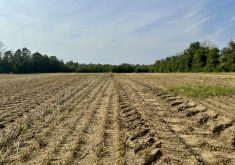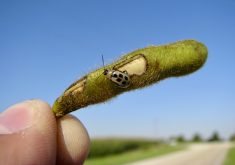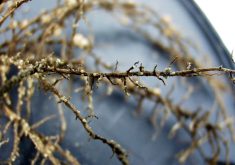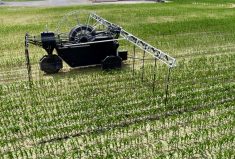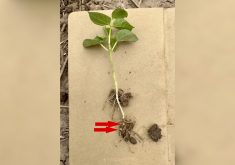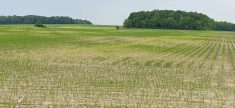Like many other pests, corn rootworm (CRW) is ahead of schedule this year. Adult beetles will be emerging this week or next. Anyone considering trapping for adults as part of the Corn Rootworm Trap Network should be setting up their trap sites soon.
Monitoring for CRW adults using sticky traps is an effective tool for flagging fields that have suspected Bt resistant rootworm populations if placed in fields planted with a CRW Bt hybrid. The traps can also provide insight into what the risk of rootworm injury will be in next year’s corn crop if that field is in continuous corn production. Higher beetle populations this year mean more eggs being laid in the soil that will hatch into larvae next spring.
If sticky traps catch an average of two or more beetles per trap per day or if easier – if after seven days in the field, each of the four traps monitored catch 14 or more beetles – that field is at high risk (Figure 1). If these traps are in a field that was planted with a CRW Bt hybrid, this indicates that a lot of rootworms survived feeding on roots expressing Bt and could be a resistant population. These fields need to be reported to your seed provider and myself to test for potential resistance.
Read Also
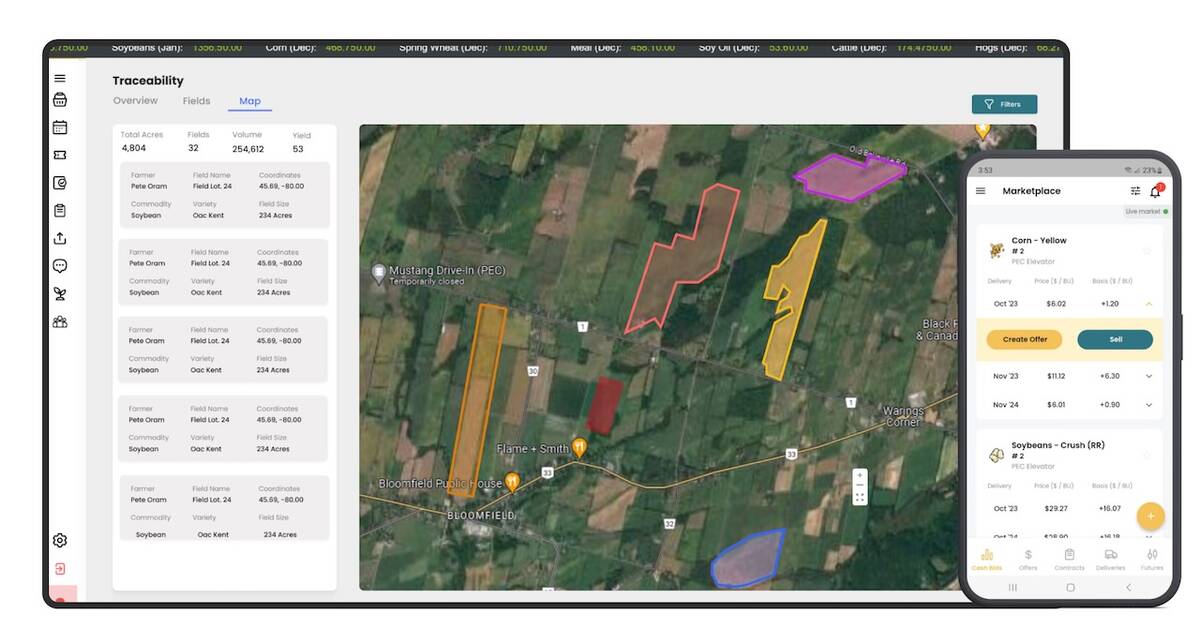
Ontario company Grain Discovery acquired by DTN
Grain Discovery, an Ontario comapny that creates software for the grain value chain, has been acquired by DTN.

If the field is not planted to a CRW Bt hybrid but will be going into corn again next year, it will need some form of protection at planting, either by using a soil applied insecticide, planting a CRW Bt hybrid or consider rotating that field out of corn next year to avoid rootworm injury. Crop rotation at least once every four years is also a more sustainable management practice to help address resistant rootworm populations. More information on trapping instructions can be found in this Field Crop News Article: https://fieldcropnews.com/2024/06/corn-rootworm-trap-participants-needed/
WESTERN BEAN CUTWORM
Western bean cutworm (WBC) moth flight has begun with a few traps are catching lower levels of moths. Don’t assume low moth counts this early means low risk. With such variable planting dates and growth stages in every region, these early moths may unload a lot of eggs in only a few of the more advanced fields out of desperation. Scouting is advised in the earliest planted fields to check for egg masses. If five per cent of the plants scouted over three scouting periods has egg masses, the field will need an insecticide application. Remember that WBC larvae need at least a tassel developing in the whorl to survive in the absence of an ear of corn, so focus on fields in later growth stages first. Fields younger than V8 are less at risk right now. Later planted fields will be at higher risk when peak moth flight takes place late July to early August. More information on moth counts can be found on the Great Lakes and Maritimes Pest Monitoring Network.

EUROPEAN CORN BORER
With European corn borer (ECB) populations becoming less susceptible to Bt corn, we need to start scouting for unexpected injury in Bt corn.
Eastern Ontario needs to be extra vigilant as they neighbour provinces with known resistant populations but all growers in Ontario should start this practice. Scout between 10 to 20 areas of the field after V6 stage, looking for signs of ECB injury including leaf or whorl feeding, frass and stalk tunneling in the midrib or at the leaf axils (Figure 3), bent or broken stalks and the tell-tale sign broken tassels. Any signs of ECB feeding injury in Bt fields should be reported to your seed provider and myself. Don’t assume the injury you see if on only refuge plants.

To help reduce the spread of resistance, shredding stalks during or shortly after harvest will need to become standard practice again to kill any overwintering ECB larvae in the corn stubble left after harvest. More information on recent resistance detections and signs of ECB injury can be found on the Canadian Corn Pest Coalition Website.
More information on biology and management of any of these pests can also be found on Ontario CropIPM and Crop Protection Hub. As always, critical pest updates will also be available through the rest of the season on Field Crop News.
– Tracey Baute is an entolmologist with OMAFA’s Field Crop Team. This article was originally posted at Field Crop News website.



